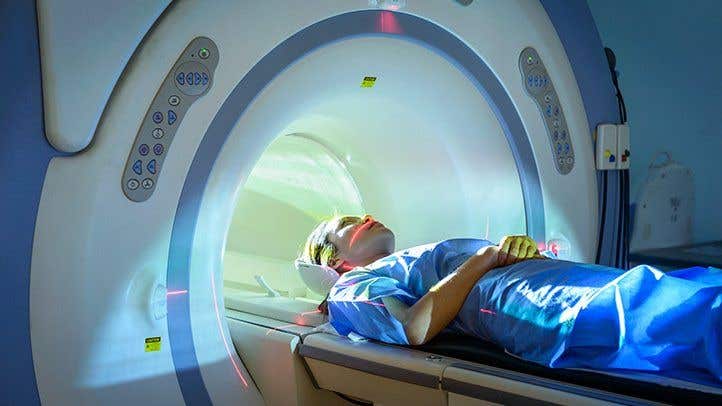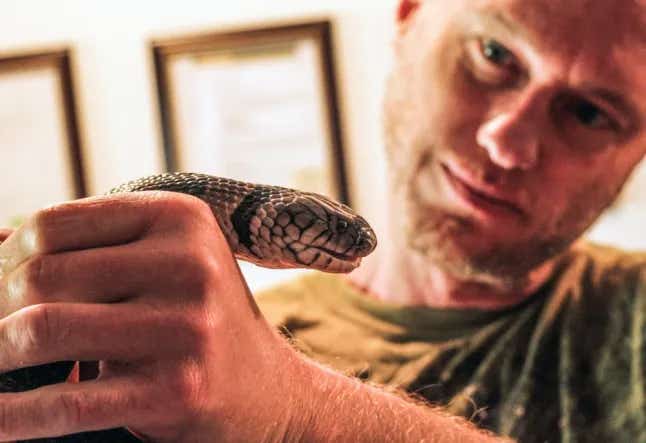Cutting-edge AI dramatically improves early cancer diagnosis
Discover how biosensors powered by AI and Raman spectroscopy enable rapid, noninvasive cancer detection and early diagnosis with groundbreaking accuracy.

AI-driven biosensors are transforming cancer detection, using saliva and urine for noninvasive diagnostics. Learn how this technology redefines early screening. (CREDIT: Everyday Health)
Early detection is critical in the fight against cancer. Diagnosing the disease in its earliest stages significantly increases survival rates and improves patient outcomes. However, traditional diagnostic methods, such as biopsies and imaging, are often invasive, time-consuming, and expensive.
These limitations have driven scientists and researchers to explore new ways of identifying cancer through noninvasive techniques. Among the most promising developments is the use of biofluids, such as saliva and urine, to detect cancer through innovative sensor technology and artificial intelligence.
A breakthrough in this field has been achieved with the development of a three-dimensional plasmonic sensor known as 3D-PHP. This flexible, paper-based sensor integrates seamlessly with conventional saliva collection tubes, providing a user-friendly platform for rapid, on-site disease screening.
The sensor leverages surface-enhanced Raman scattering (SERS), a cutting-edge optical technique that amplifies molecular signals. By analyzing saliva samples, the 3D-PHP system can detect metabolic changes associated with lung cancer. These metabolic alterations are unique to cancer patients, allowing the sensor to distinguish between malignant and benign cases with remarkable accuracy.
The sensor has achieved impressive results in clinical testing. Using a machine learning algorithm, it successfully classified patient samples with an accuracy of 87.5%, sensitivity of 91.2%, and specificity of 80.2%.
This level of precision offers new hope for early-stage cancer diagnosis, particularly for lung cancer, a disease that often goes undetected until advanced stages. The ability to identify specific Raman spectral features linked to cancer progression also provides insights that could help tailor treatments to individual patients.
One of the key advantages of this technology is its simplicity and accessibility. Unlike traditional methods that require sophisticated laboratory equipment, the 3D-PHP sensor is portable and cost-effective. It eliminates the need for invasive biopsies and lengthy processing times, making it a practical tool for routine screenings in clinics or even at home.
This innovation is not only a technical achievement but also a step toward making advanced healthcare more equitable and widely available.
Related Stories
The potential applications of this technology extend beyond saliva-based diagnostics. Researchers have also explored the use of urine to detect multiple types of cancer, including pancreatic, prostate, lung, and colorectal cancers. In recent studies, urine samples from approximately 250 patients were analyzed using similar sensor technology.
The results were groundbreaking, with sensitivity and specificity rates exceeding 98%. This approach could revolutionize how cancer is diagnosed, allowing for simultaneous screening of multiple cancer types in a single test. Results are generated within hours, providing rapid insights that can inform timely medical decisions.
Another exciting aspect of this research is its integration of artificial intelligence. Machine learning algorithms are used to analyze the complex data generated by Raman spectroscopy. These algorithms identify patterns and biomarkers that might go unnoticed by the human eye.
This computational power enables the sensor to detect subtle metabolic changes indicative of cancer at its earliest stages. Beyond diagnosis, AI-driven analysis offers valuable insights into the biological mechanisms of cancer, potentially paving the way for personalized treatments tailored to an individual’s unique metabolic profile.
The collaboration between research institutions and medical centers has been crucial in advancing this technology. Partnerships with hospitals have allowed researchers to refine the sensor for clinical use and validate its effectiveness in real-world settings.
For example, in collaboration with a leading university hospital, researchers developed a plasmonic needle for colorectal cancer diagnostics. This device amplifies molecular signals directly at the tumor site during a colonoscopy, providing detailed compositional data without causing bleeding or discomfort.
The principles behind this technology have been inspired by nature. For years, scientists have observed how dogs can detect cancer through their acute sense of smell. Dogs can identify volatile organic compounds (VOCs) emitted by cancerous tissues. Researchers have adapted this concept, creating sensors capable of detecting VOCs in human biofluids such as saliva and urine. These sensors amplify Raman signals by over 100 million times, enabling the detection of cancer-specific metabolites with unparalleled sensitivity.
The potential impact of this technology is vast. While its primary focus has been on cancer, researchers are already exploring applications for other diseases with complex diagnostic challenges. Conditions such as synaptic disorders, which currently lack reliable diagnostic tools, could benefit from similar sensor technology. The research team is committed to further expanding the scope of this innovation, aiming to develop a universal platform for noninvasive disease detection.
The commercial potential of this technology has not gone unnoticed. The research team has filed multiple patents in Korea, the United States, and Europe to protect their intellectual property. Companies are already working on licensing and adapting the technology for consumer products. For example, last year, a version of the urine-based diagnostic system was transferred to SOLUM Healthcare. This partnership aims to bring the technology to market, allowing for rapid cancer screening in clinical and home settings.
The achievements of this research have garnered significant recognition. The Korea Institute of Materials Science named it the top research accomplishment of the year. The work has also been published in leading scientific journals, including Biosensors and Bioelectronics and Sensors and Actuators B-Chemical. These publications highlight the scientific rigor and innovative approach behind the technology.
Looking ahead, the research team envisions a future where noninvasive diagnostics become the standard of care. Their goal is to make these tools accessible worldwide, reducing healthcare disparities and empowering patients to take charge of their health. By combining cutting-edge materials science, advanced analytics, and practical design, this technology represents a paradigm shift in how diseases are detected and managed.
Dr. Ho Sang Jung, a leading figure in this research, expressed optimism about its potential. “This technology can diagnose not only cancer but also other diseases with limited diagnostic options. We are committed to developing innovations that improve lives globally,” he stated. The dedication of researchers, coupled with advancements in artificial intelligence and biosensor technology, is transforming the landscape of diagnostics, offering hope for earlier detection and better outcomes.
As this technology continues to evolve, its implications for healthcare are profound. By simplifying and accelerating the diagnostic process, it has the potential to save countless lives. The combination of noninvasive testing, rapid results, and AI-driven insights heralds a new era in medical science, one where precision and accessibility go hand in hand. This innovation is not just about detecting disease; it’s about redefining how healthcare is delivered, ensuring that advanced diagnostics are within reach for all.
Note: Materials provided above by The Brighter Side of News. Content may be edited for style and length.
Like these kind of feel good stories? Get The Brighter Side of News' newsletter.
Joshua Shavit
Science & Technology Writer | AI and Robotics Reporter
Joshua Shavit is a Los Angeles-based science and technology writer with a passion for exploring the breakthroughs shaping the future. As a contributor to The Brighter Side of News, he focuses on positive and transformative advancements in AI, technology, physics, engineering, robotics and space science. Joshua is currently working towards a Bachelor of Science in Business Administration at the University of California, Berkeley. He combines his academic background with a talent for storytelling, making complex scientific discoveries engaging and accessible. His work highlights the innovators behind the ideas, bringing readers closer to the people driving progress.



